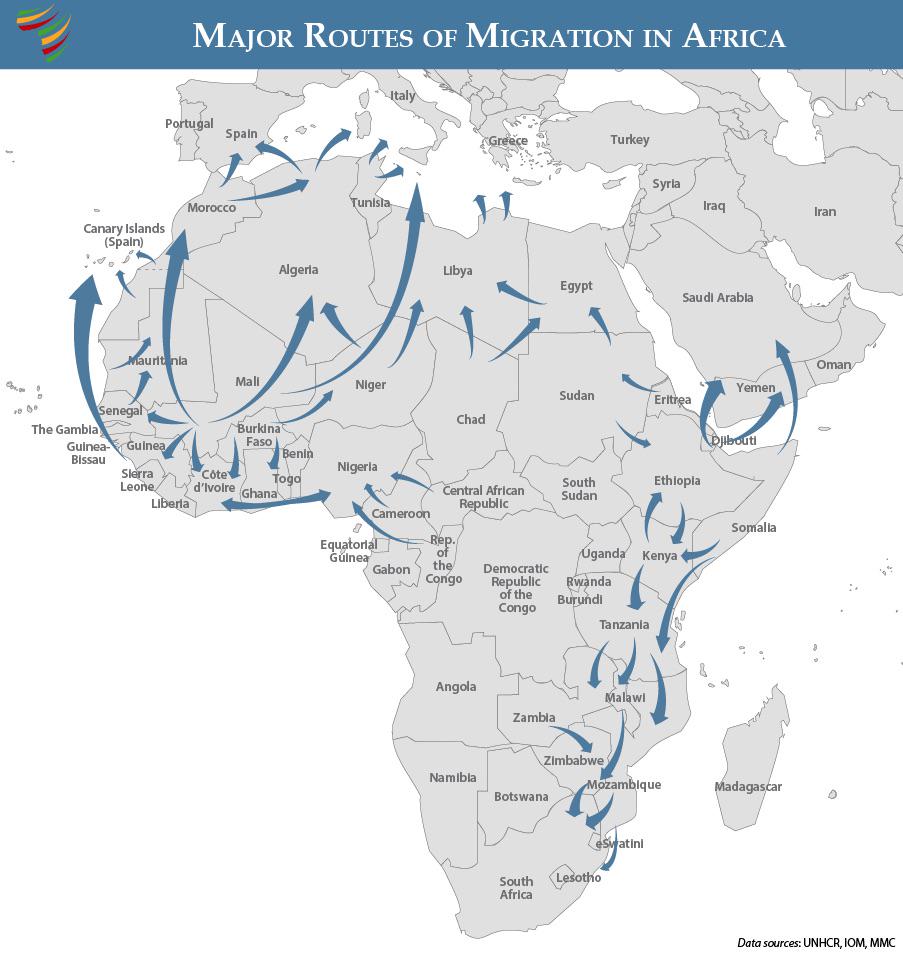Major Routes of Migration in Africa Map


David Chen
Data Visualization Specialist
David Chen is an expert in transforming complex geographic datasets into compelling visual narratives. He combines his background in computer science ...
Geographic Analysis
What This Map Shows
This map presents a comprehensive overview of the major routes of migration across Africa, highlighting the pathways that migrants take as they move within and beyond the continent. It illustrates the flow of people driven by a myriad of factors such as economic opportunities, conflict, environmental changes, and social dynamics. As one scrutinizes the map, it becomes evident that migration is a complex web of interconnected routes that reflect both historical influences and contemporary trends.
Deep Dive into Migration Patterns in Africa
Migration in Africa is a phenomenon that has been shaped by numerous factors over centuries. Interestingly, Africa is home to some of the world’s largest migratory movements, both internally and internationally. According to the African Centre for Strategic Studies, there were more than 36 million international migrants on the continent as of 2020, showcasing the scale of this movement.
One significant driver of migration in Africa is economic opportunity. Many individuals migrate from rural to urban areas in search of better job prospects. For instance, countries like Nigeria and South Africa serve as magnets for internal migrants due to their burgeoning urban centers. The map reveals vibrant routes leading to cities such as Lagos, Johannesburg, and Nairobi, where opportunities in sectors like manufacturing, services, and technology attract those seeking improved livelihoods.
Conflict and instability also play a crucial role in shaping migration patterns. Regions experiencing violence or political turmoil, such as parts of the Democratic Republic of the Congo and South Sudan, see large numbers of people seeking refuge in neighboring countries. The map highlights these escape routes, often leading to camps and cities in Uganda and Kenya, where migrants seek safety and stability.
Environmental factors are increasingly significant in the context of migration. As climate change intensifies, areas such as the Sahel are becoming less habitable due to drought and desertification. Consequently, communities are forced to move in search of arable land or water resources. This environmental migration is becoming a critical aspect of the larger narrative of human movement across Africa, with the map illustrating these routes leading to more fertile regions or urban centers.
Regional Analysis
When examining the map closely, one can identify distinct regional trends in migration. For example, West Africa is characterized by high levels of intra-regional migration, particularly among countries like Ghana, Nigeria, and Côte d'Ivoire. These countries have long-standing ties, and many West Africans move within this sub-region in search of work or education.
In contrast, East Africa presents a different scenario. The map indicates significant migration flows towards Kenya and Uganda, driven by both economic opportunities and the influx of refugees fleeing conflicts in countries like Somalia and South Sudan. This region's unique challenges and opportunities create a different migration dynamic compared to West Africa.
Southern Africa, with its mining and agricultural sectors, attracts a significant number of migrants from neighboring countries, especially Zimbabwe and Mozambique. The routes leading to South Africa are particularly well-trodden, as many seek employment in urban areas or in the mining industry. Interestingly, this has led to both economic growth in South Africa and challenges related to social integration and xenophobia.
Significance and Impact
Understanding migration routes in Africa is essential for several reasons. Firstly, it highlights the complex interplay between socio-economic conditions, environmental changes, and political stability. Migration can drive economic growth in host countries while also presenting challenges, such as resource allocation and social cohesion.
Furthermore, as the map reveals, migration is not a static phenomenon. Current trends indicate that migration will continue to evolve, particularly in response to climate change. Projections suggest that by 2025, millions more may be displaced due to environmental factors, making it crucial for policymakers to develop adaptive strategies.
In conclusion, the major routes of migration in Africa depict a landscape of human resilience and adaptability. They reflect the ongoing quest for better opportunities and safety, underscoring the need for comprehensive policies that recognize and address the diverse motivations behind migration. As we continue to explore these patterns, we gain valuable insights into the future of movement across this dynamic continent.
Visualization Details
- Published
- September 20, 2025
- Views
- 66
Comments
Loading comments...